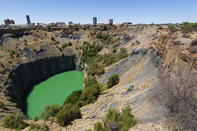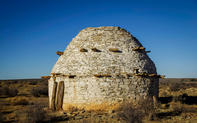The Discovery of Diamonds
The history of the Northern Cape is as old as time, witnessed by the unique geological structures, vistas, valleys and rivers as you drive through the parched landscape.

Populated by the San originally, many of their cave drawings are still visible throughout the region. It later became populated by explorers and entrepreneurs, the most famous perhaps being Cecil John Rhodes. The discovery of diamonds has had a huge impact on the area and its development, as seen by the big hole in Kimberley.
Many famous South Africans originated from this region: Sol Plaatjie, a founder member of the Native National Congress, which later became the ANC. Also, Kgosi (Chief) Galeshewe, who valiantly led an armed rebellion against the government of the time in 1878 to fight against repression. Historical walking tours in Kimberly highlight the exploits and bravery of these men.
The Cape Colony (as today's Northern Cape was called) saw many major battles during the Anglo Boer War. Many monuments commemorating these battles can be seen in Magersfontein. Along the N12 between Kimberley and Cape Town, many of the battlefields are signposted. For a more detailed history of these battles and the Boer War itself, visit the Magersfontein and McGregor Museums.
Corbelled Houses

When the Trek Boers arrived on the high Nuweveld Plateau around 1800 they found there were no trees, and that it got exceedingly cold in winter. They were used to building wattle-and-daub 'hartbeeshuise', but on that harsh scrubland around Williston and Carnarvon they had to reinvent the architectural wheel.
The ingenious result was the corbelled house, using flat slabs of shale to build a circular stone house. Because there was no timber for roof beams (or grass for thatch), the roof was made in the shape of a dome, with increasingly tighter concentric circles of stone. You'll find corbelled buildings around the Mediterranean - also a result of not enough trees for building.